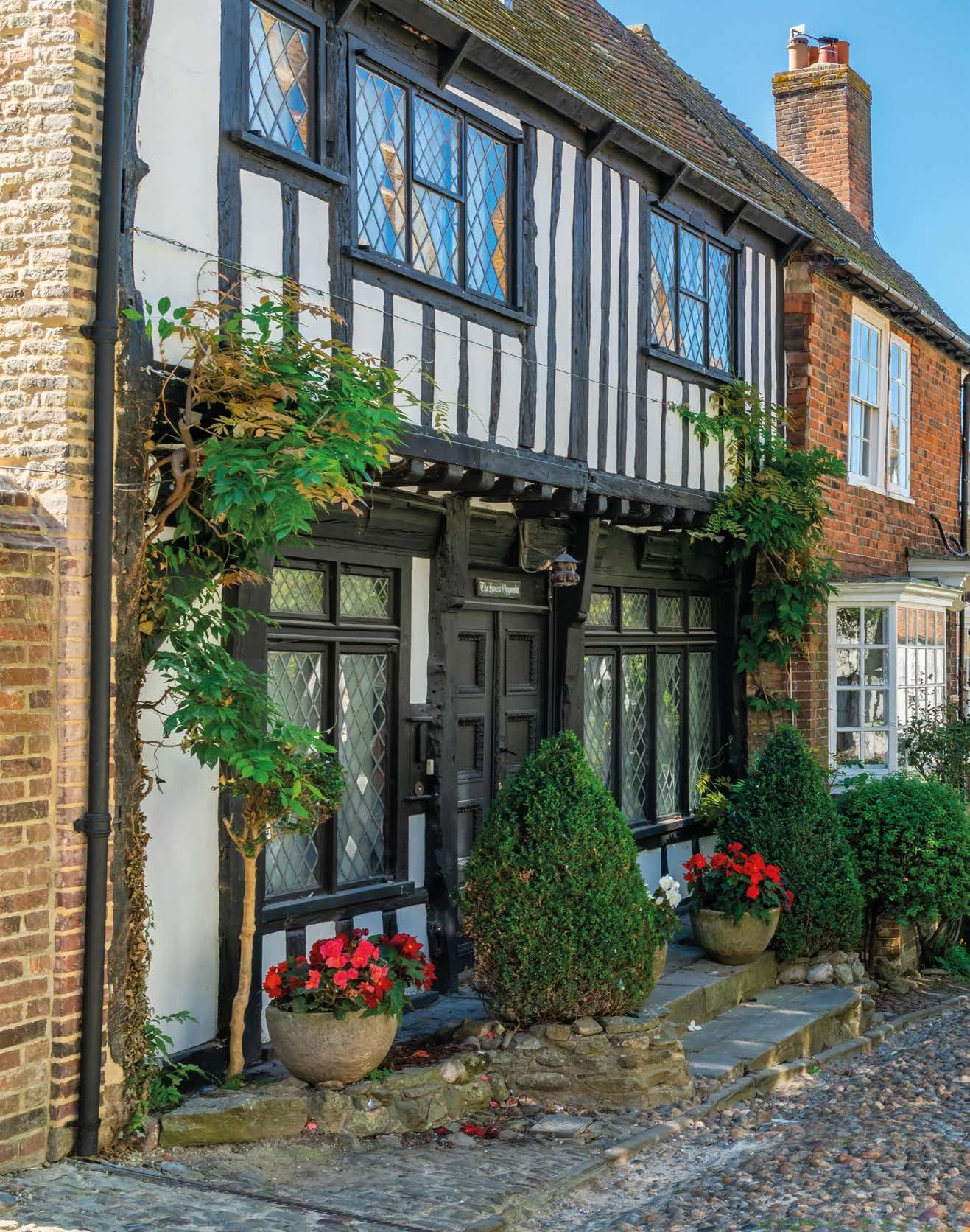
7 minute read
CAPITAL ESCAPES
BBA TRAVEL/ALAMY © PHOTOS: 48 BRITAIN www.britain-magazine.com
Within a short radius of the capital lie bustling market towns and grand cathedral cities, home to a treasure trove of royal palaces, Roman ruins, cobbled backstreets and peaceful water meadows
WORDS KEITH DREW

RYE
The East Sussex honeypot of Rye, a little over an hour on the train from London St Pancras, is impossibly picturesque. Start your wanderings around town with an amble down Mermaid Street, whose wonky timber-framed homes are clad in ivy and wisteria and sport names such as “The House with Two Front Doors” and “The House with the Seat”, before browsing the town’s wealth of contemporary art galleries. You can brush up on Rye’s former role as a Cinque Port, the confederation of English Channel harbours that protected England against invasion from France, at the 14th-century Ypres Tower, which formed part of the town’s defences. Rye now lies two miles from the sea – end your day among the saltmarsh and shingle ridges of hauntingly beautiful Rye Harbour Nature Reserve or on the rolling dunes of Camber Sands, one of the best beaches in East Sussex.
ST ALBANS
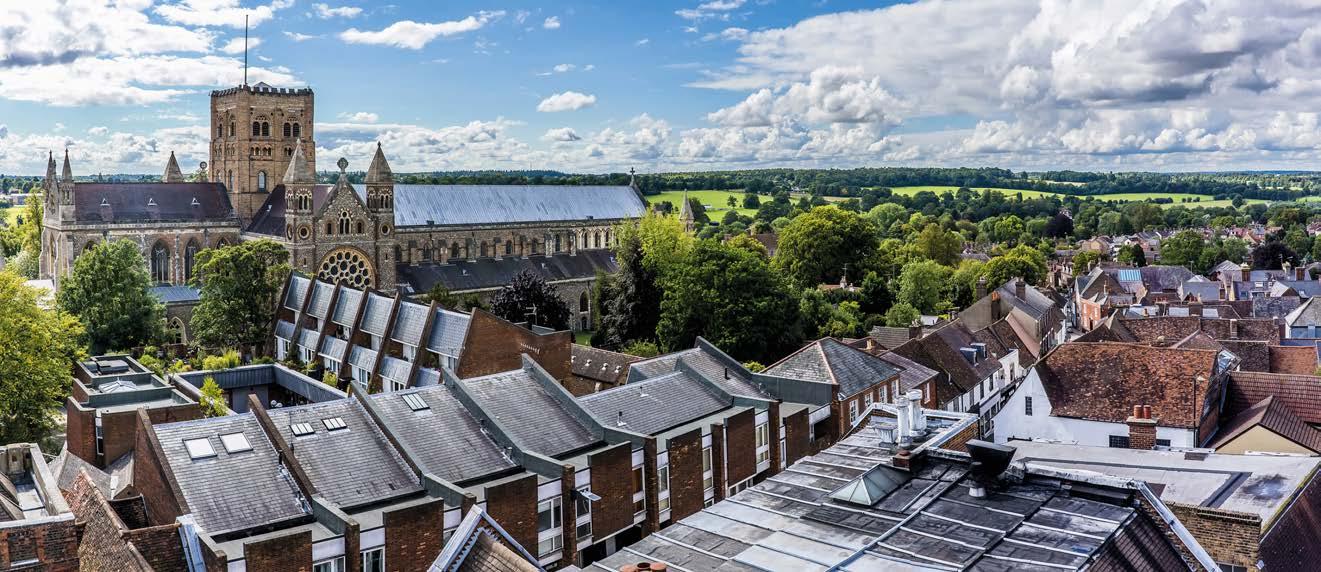
Just 20 minutes on the train from London St Pancras, the cathedral city of St Albans was one of the largest Roman towns in Britain, when it was known as Verulamium, “the settlement above the marsh”. The shrine of St Alban, Britain’s first saint, lies in the monumental St Albans Cathedral, although the main draw here are the superb medieval wall paintings that line its vast nave. The cathedral’s grounds lead onto Verulamium Park, site of the city’s ancient walls and a lovely ornamental lake; the Sandridge Hoard, in the park’s Verulamium Museum, is one of the largest hoards of Roman gold coins ever found in Britain. Stop for a cup of tea at the restored court room in the city’s modern Museum + Gallery or pick up a bite to eat at St Albans Charter Market, a fixture since the 9th century, but make sure you don’t leave without trying a hot cross bun, said to have been first baked here for the city’s poor by a monk in 1361.
WINCHESTER

You’re swapping one capital for another with a visit to Winchester, Hampshire’s county town that lies at the western end of the South Downs, less than an hour by train from London Waterloo. When Alfred the Great was crowned King of Wessex in 871, he made Winchester his capital, and the city remained the most influential in England for the next 300 years. Its centrepiece, both figuratively and geographically, is magnificent Winchester Cathedral, whose medieval nave, the longest in Europe, houses the tomb of Jane Austen. On the city’s fringes, you can follow in the footsteps of John Keats, who wrote Ode to Autumn after wandering through Winchester’s idyllic water meadows; the walk passes by the Hospital of St Cross, England’s oldest almshouse, which continues to offer a Wayfarer’s Dole of “a horn of beer and a morsel of bread” to passers-by. If you can time your trip for the middle or last Sunday of the month, drop by the Broadway, where the stalls of Winchester Farmers’ Market overflow with local Hampshire produce.
HERTFORD
Set at the confluence of four rivers, prosperous Hertford is the county town of Hertfordshire, a sedate escape of creeper-clad townhouses and waterside cottages just a 50-minute train ride from the capital. The town was founded by Edward The Elder in the early 10th century and its Norman castle was a royal palace for 300 years – James I of Scotland was imprisoned here and Elizabeth I spent much of her childhood within its walls, although only those walls and the gatehouse remain. Pick up a map from the Tourist and Information Centre and follow the Hertford Heritage Trail around town, which links together the oldest Quaker meeting house in the country, buildings designed by the British architect Reginald Blomfield, and the former home of Samuel Stone, founder of the town’s American offspring – Hartford, Connecticut. Outside of town, take the six-mile round stroll along the River Lea to Ware and back, or putter through the floodplains that connect the two on the Ware & Hertford Waterbus.


LEWES
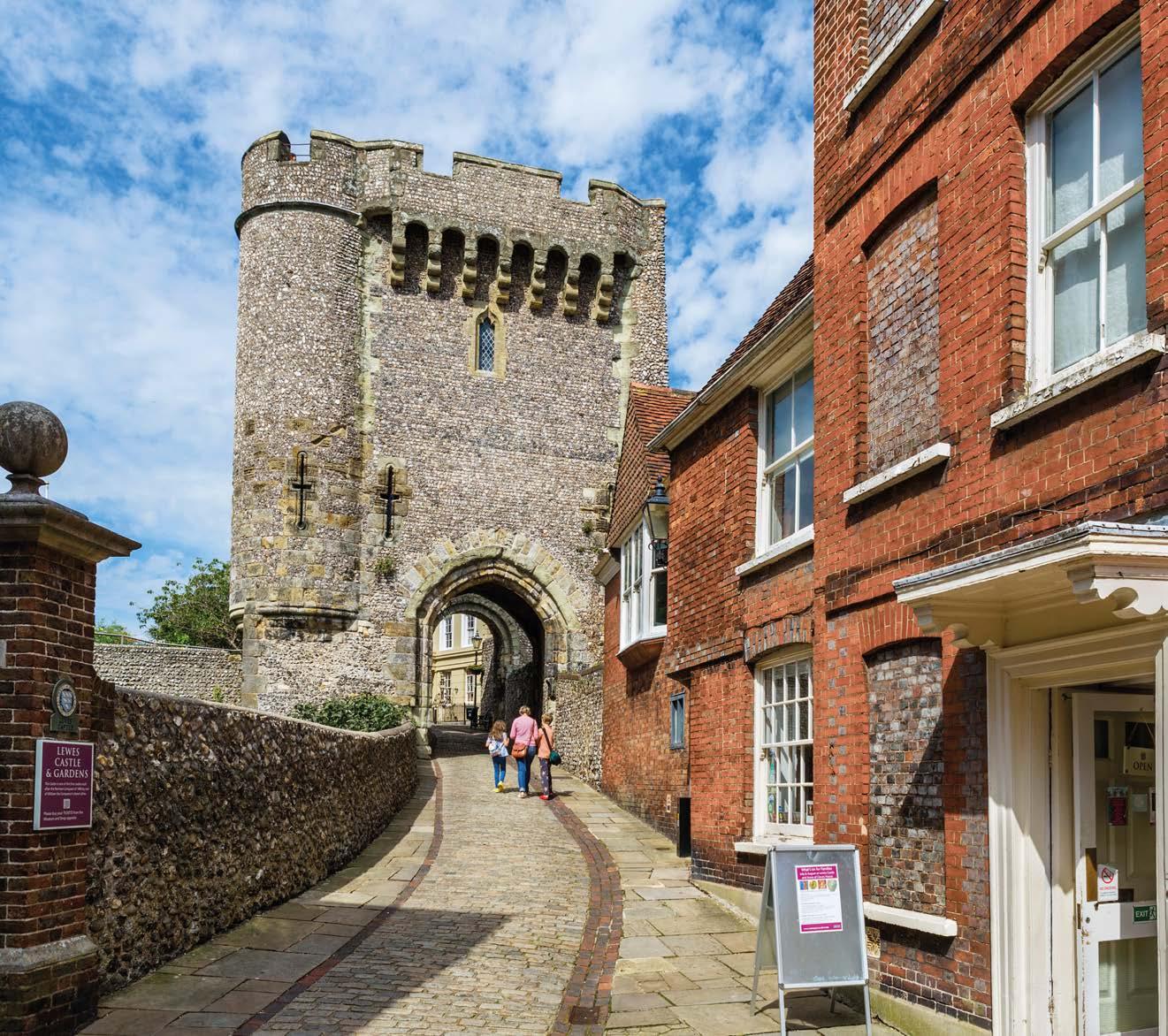
The county town of Lewes is best known for its spectacular Bonfire Night, the biggest event of its kind in the world, when its historic bonfire societies march through town wielding burning crosses. But for the rest of the year, this is a tranquil place of medieval streets and winding twittens (alleyways), a warren of independent bookshops and bijou boutiques. Lewes lies on the sides of the Ouse Valley – the town’s name stems from “Hlaews”, the Old English for “hills” – and you’ll enjoy a good workout taking in Lewes Castle, Anne of Cleaves House and its other sights. The castle was built soon after 1066 by William de Warenne, the 1st Earl of Surrey, and has fabulous views from its keep; furnished in Tudor style, the striking 15th-century Anne of Cleves House (temporarily closed) was given to the former queen by Henry VIII as part of her divorce settlement, although she never actually visited.
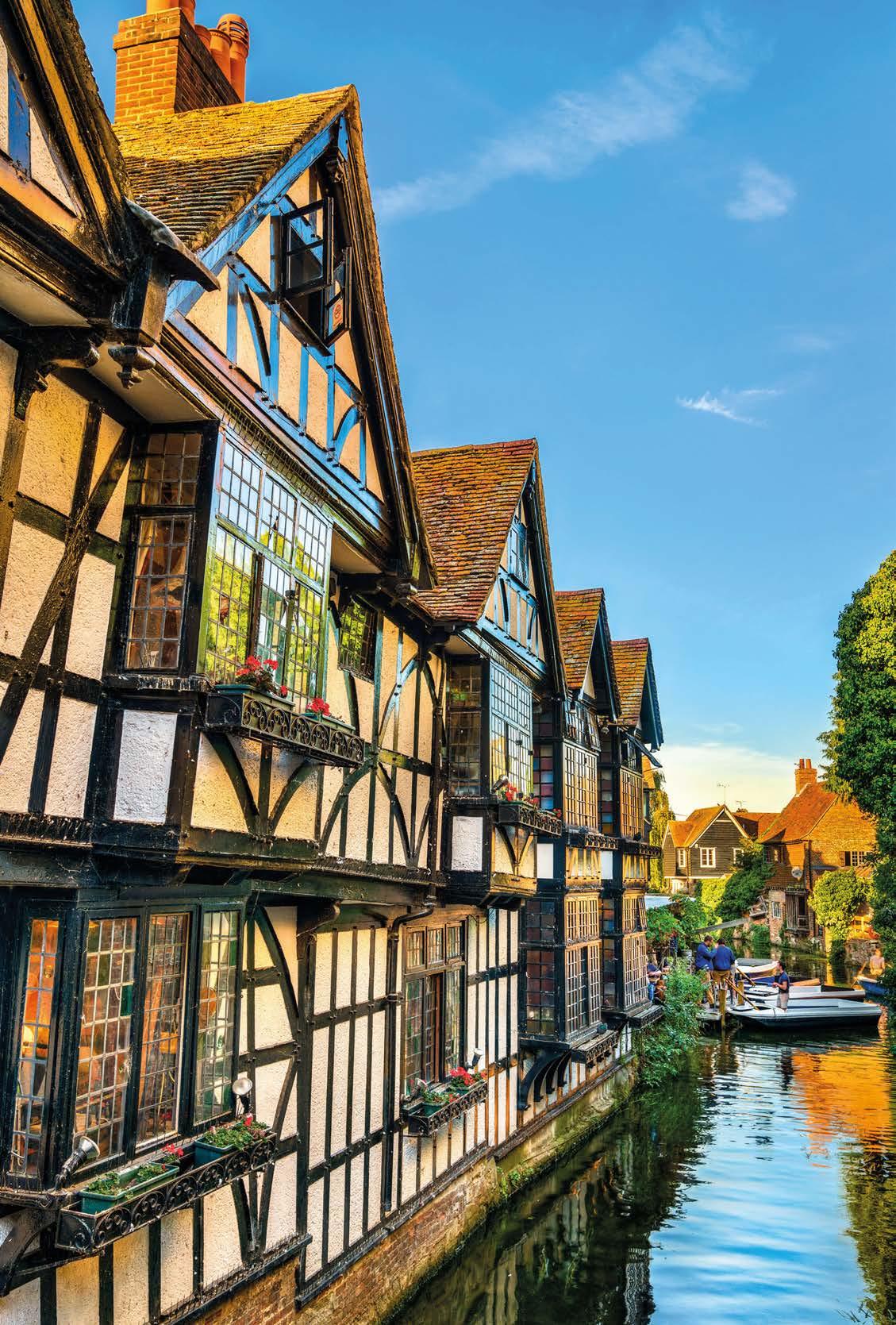
IAN DAGNALL/LEONID ANDRONOV/ALAMY © PHOTOS:
CANTERBURY
For a city so weighty with history, Canterbury is surprisingly compact, with a web of cobbled side-streets encircling its fabled cathedral. Founded in 597 and now the headquarters of the Church of England, immense Canterbury Cathedral runs the gamut from Norman to Romanesque and Gothic architecture and is the obvious starting point for a visit. But it’s just one of a trio of important religious buildings that make up the city’s UNESCO World Heritage Site – St Martin’s Church, originally the private chapel of the 6th-century Queen Bertha of Kent, is the oldest church in the English-speaking world, while St Augustine’s Abbey, now in ruins, dates back to when the eponymous saint arrived from Rome to re-establish Christianity in southern England. Balance your visit with some shopping among the timber-framed Tudor houses sprinkled throughout the medieval old town and a stroll along the languid Great Stour river that runs through its centre.
KENT’S CASTLES
You could fill a fortnight of day-trips visiting the castles of Kent, but start with Hever [pictured] and Leeds, around 35 and 40 miles southeast of central London respectively. Leeds Castle dates back to 1119, when it was built around two rocky islands in the River Len. Within 20 years, the castle was being besieged by King Stephen and it became a Norman stronghold, a Tudor palace, a Jacobean country house and a Georgian mansion before opening to the public in 1976. Where a visit to Leeds is about exploring the castle’s state rooms, a trip to Hever is as much about its glorious grounds, 125 acres of award-winning gardens plus Hever Lake, a beautiful spot for boating in the summer months. Hever Castle was the childhood home of Anne Boleyn, Henry VIII’s second wife; you can see two of her prayer books, both bearing her signature, on display in the Book of Hours Room.
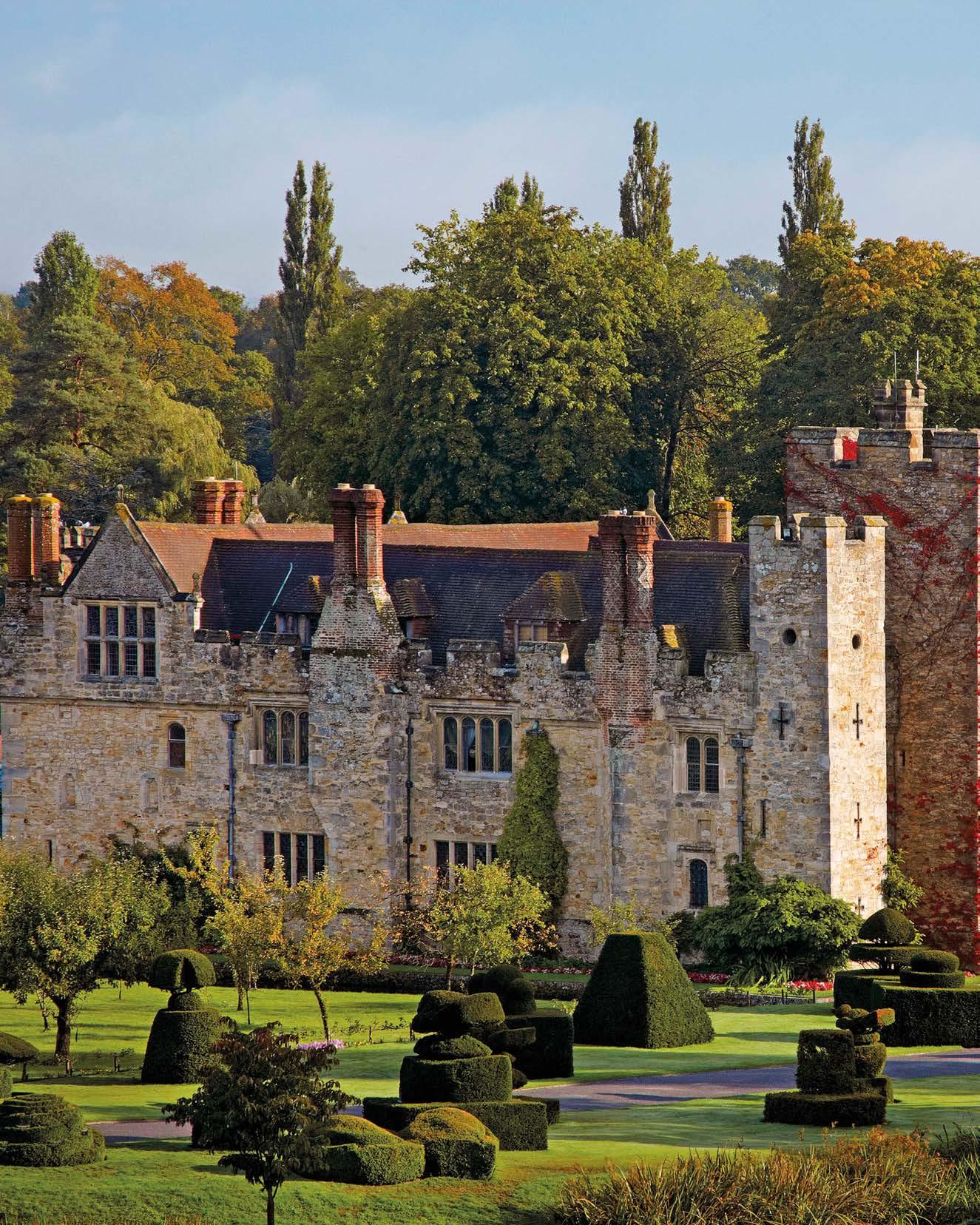
GARDENS & OLEG ABLINSKY/ISTOCK/GETTY/PETER SMITH/THE ROYAL COLLECTION/HER MAJESTY QUEEN ELIZABETH II/HEVER CASTLE © PHOTOS:

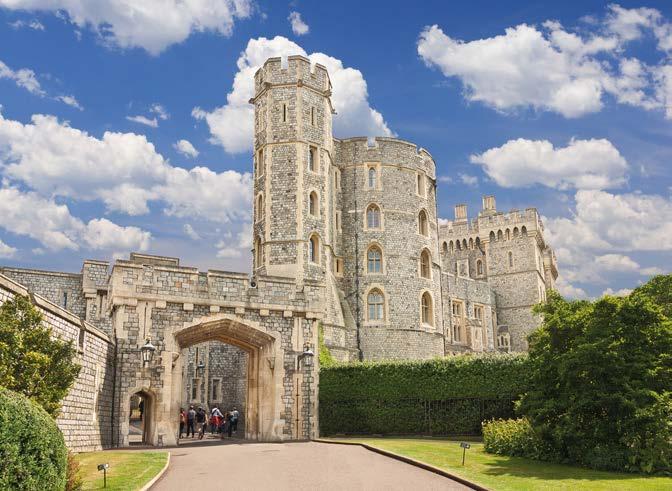
WINDSOR
It’s no wonder the Queen spends most of her weekends at Windsor Castle. Family home of the British monarchy for over 1,000 years, this rambling building is the largest and oldest occupied castle in the world. You could easily while away a whole morning exploring the lavish State Apartments but spare some time for St George’s Chapel, where Prince Harry married Meghan Markle in 2018. Cross over the River Thames to visit Eton College, Harry’s prestigious old school, which has been educating England’s brightest minds since 1440. Windsor is a very leafy city, around the Thames within the city itself and even more so at sweeping Windsor Great Park to the south, used as a hunting ground by William the Conqueror and now home to hundreds of red deer.










